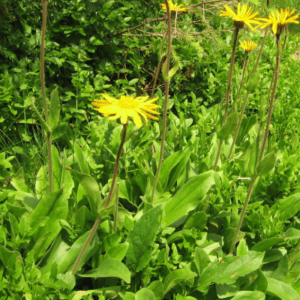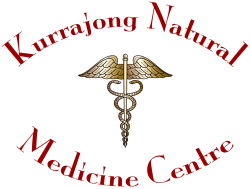Arnica montana
Arnica montana
Biological Name:
(Arnica montana L.)
Family:
Asteraceae
Other Names:
Arnica, Leopard’s bane, mountain tobacco, mountain arnica, common arnica, wolfsbane.

Introduction:
Arnica is a perennial plant generally found in mountainous areas of Canada, the northern United States, Russia and Europe. The plant reaches a height of 30 to 60 cm (12 to 24 inches) and generally contains from one to nine large, daisy-like flower heads, which bloom during the summer months and when dried, are the primary parts used medicinally [1].
Arnica (Arnica montana) is very popular. Germany alone has manufactured more than 100 drug preparations containing this herb. Applied topically as a cream, ointment, liniment, salve, or tincture, arnica has been used by both Europeans and Native Americans to soothe muscle aches, reduce inflammation, and heal wounds.
While arnica has also been used internally as an herbal remedy for certain heart disorders, it should only be used in this way under the supervision of a healthcare provider. In fact, arnica in herbal form is primarily restricted to topical (external) use only, because it can cause serious side effects when it is used internally. Homeopathic arnica may be prescribed internally by a qualified homeopath or medical herbalist.
The phytochemistry of arnica is complex and wide ranging and includes flavonoid glycosides, terpenoids, amines and fatty acid components. Other components found in arnica include the bitter compound arnicin, caffeic acid, carotenoids (alpha- and beta-carotene, cryptoxanthin, lutein), phytosterols, resin, tannins, lignans, and anthoxanthine [1].
The plant extracts have been reported to possess antibacterial, antitumor, antioxidant, anti-inflammatory, antifungal and immunomodulatory activity [2,3].
Medicinal Uses and Indications
Arnica has been used for centuries in traditional herbalism as a remedy for trauma-, strain- and/or inflammation-related conditions of the locomotor system and is one of the natural remedies most often used for rheumatologic conditions as well as a treatment for acne, boils, bruises, rashes, and wounds. [4]
Arnica is used topically for a wide range of conditions including bruises, sprains, muscle aches, wound healing, acne, superficial phlebitis, rheumatic pain, inflammation from insect bites, and swelling due to fractures.
An experienced clinician may recommend arnica as an herbal remedy for senile heart, angina, or coronary artery disease.
Homeopathic preparations are also used to treat sore muscles, bruises, and other conditions associated with overexertion or trauma. Homeopathic doses are very diluted and generally considered safe for internal use when taken in accordance with the directions on the product labelling.
Application in Herbal Medicine:
Reduce pain and swelling.
Promotes the healing of wounds, bruises, and irritation. Caution: Use only very diluted tincture externally as it can cause inflammation and blistering when applied.
In countries where Arnica is indigenous, it has long been a popular remedy. In the North American colonies the flowers are used in preference to the rhizome. They have a discutient property (capable of dissipating diseased matter). The tincture is used for external application to sprains, bruises, and wounds, and as a paint for chilblains when the skin is unbroken. Repeated applications may produce severe inflammation. It is seldom used internally, because of its irritant effect on the stomach. Its action is stimulant and diuretic, and it is chiefly used in low fevers and paralytic affections.
Arnica is also used sometimes to relieve abdominal pains, when used as a poultice.
As a single or in combination with other Herbs in may be useful in:
External use is batericidal and vesicant. Stimulates peripheral blood supply and is locally healing. It is used mainly as a local irritant and vulnary for bruises and sprains. Also used for phlebitis, shingles and inflammed breast. Promotes wound healing and reabsorption of hemorraghes (bruises).
Used internally (professional use only!! See caution above) during emergencies after mental or physical shock, the pain and swelling after dental extraction, and for fractures and headaches (including concussion). Used as a “shock” remedy to help the body and mind cope with sudden, violent events.
Used before and after surgery to assist healing.
Stimulates immune system and heart.
Causes reabsorption of internal bleeding in bruises and sprains (a cream is applied to affected area or else a compress used which has been dipped in a solution of dilute tincture, then wrung and applied.
Relieves pain and inflammation (external). The liquid solution is used on any UNBROKEN surface to stop pain. Used as a compress on rheumatic joints, bruises, painful and swollen feet. Also used to relieve pain of muscle spasm.
Used in liniments and creams (often combined with witch hazel) for dislocations, sprains, bruises, chilblains, varicose ulcers, and as a throat gargle.
Used primarily as an external tincture or salve. The extract is used to reduce inflammation and pain of bruises, sprains, tendons, dislocations, and swollen feet.
For impetigo the skin is cleansed with 45% alcohol containing a few drops of arnica tincture.
Used in lotion or ointment form for swelling and bruises. Tincture is diluted 5 times with water for compresses applied to swellings. Dilute tincture is also used as paint for chilblains.
For violent stomach and abdominal pain, a compress of arnica tea is made by boiling the entire plant in vinegar and water.
Clears fungal and bacterial infections (external).
A poultice of the tincture or a cream is used for menstrual cramps.
Used internally (see caution note above!) for heart complaints and is used in Germany by physicians for heart conditions.
Also for gout, rheumatism and feverish conditions (5-10 grains taken 3 to 4 times daily).
Used by professionals for short-term treatment of heart failure and coronary heart disease. Enhances circulation .
Has been used in cases of low fever and paralytic afflictions.
For falling hair (used to stimulate circulation) = Applied as a cream or ointment to affected areas or else a well diluted tincture is used as a hair rinse. Falling hair treatment should include support with nervines and vitamin B supplements.
Tender feet = 1/2 oz. tincture in a foot bath of hot water.
Has been used internally in Russian folk medicine to stop bleeding, for boils, inflammation of the genitalia, heart weakness, to stimulate the central nervous system, to promote bile, to reduce cholesterol.
Dosage:
Use professionally prepared remedies whenever possible.
Do not take without the supervision of a qualified medical professional.
Safety:
Do not use internally. Internal use may cause great pain or even death.
References
- https://www.drugs.com/npp/arnica.html
- Tekko IA, Bonner MC, Bowen RD, Williams AC. Permeation of bioactive constituents from Arnica montana preparations through human skin in-vitro. J Pharm Pharmacol. 2006;58(9):1167-1176.16945174
- Kriplani P, Guarve K, Baghael US. Arnica montana L. – a plant of healing: review. J Pharm Pharmacol. 2017 Aug;69(8):925-945. doi: 10.1111/jphp.12724. Epub 2017 Apr 11. PMID: 28401567.
- Dragos D, Gilca M, Gaman L, Vlad A, Iosif L, Stoian I, Lupescu O. Phytomedicine in Joint Disorders. Nutrients. 2017 Jan 16;9(1):70. doi: 10.3390/nu9010070. PMID: 28275210; PMCID: PMC5295114.
Disclaimer
Disclaimer information for users of the Kurrajong Natural Medicine Centre, Namaste Yoga Kurrajong and The Herbal Health Coach website.
Page last updated: 26th June 2020
Information provided for education and research information only
The information on this website is presented by Kurrajong Natural Medicine Centre for the purpose of disseminating health information free of charge for the benefit of the public.
While Kurrajong Natural Medicine Centre has exercised due care in ensuring the accuracy of the material contained on this website, the information on the site is made available on the basis that Kurrajong Natural Medicine Centre is not providing professional advice on a particular matter.
This website is not a substitute for independent professional advice. Nothing contained in this site is intended to be used as medical advice and it is not intended to be used to diagnose, treat, cure or prevent any disease, nor should it be used for therapeutic purposes or as a substitute for your own health professional’s advice.
Kurrajong Natural Medicine Centre does not accept any liability for any injury, loss or damage incurred by use of or reliance on the information provided on this website.
Quality of information
Kurrajong Natural Medicine Centre makes every effort to ensure the quality of the information available on this website and updates the information regularly. Before relying on the information on this site, however, users should carefully evaluate its accuracy, currency, completeness and relevance for their purposes, and should obtain any appropriate professional advice relevant to their particular circumstances. Kurrajong Natural Medicine Centre cannot guarantee and assumes no legal liability or responsibility for the accuracy, currency, completeness or interpretation of the information.
The material may include the views or recommendations of third parties and does not necessarily reflect the views of Kurrajong Natural Medicine Centre or indicate a commitment to a particular course of action.
Links to other websites
This website contains links to other websites which are external to Kurrajong Natural Medicine Centre. Kurrajong Natural Medicine Centre takes reasonable care in selecting linking websites but Kurrajong Natural Medicine Centre accepts no responsibility for material contained in a website that is linked to this site. It is the responsibility of the user to make their own decisions about the accuracy, currency, reliability and correctness of information contained in linked external websites.
Links to external websites are provided for the user’s convenience and do not constitute an endorsement or a recommendation of any third party products or services offered by virtue of any information, material or content linked from or to this site. Users of links provided by this site are responsible for being aware of which organisation is hosting the site they visit.
Views or recommendations provided in linked sites may include the views or recommendations of third parties and do not necessarily reflect those of Kurrajong Natural Medicine Centre or indicate a commitment to a particular course of action. .



